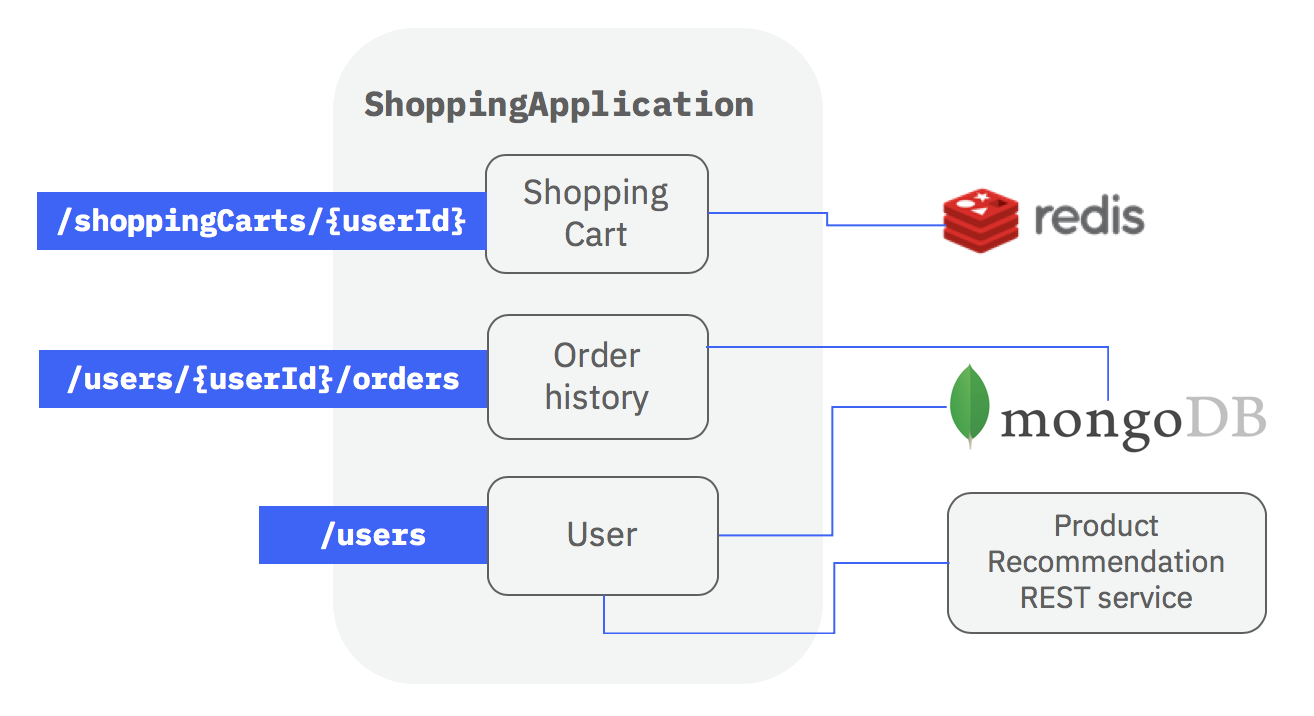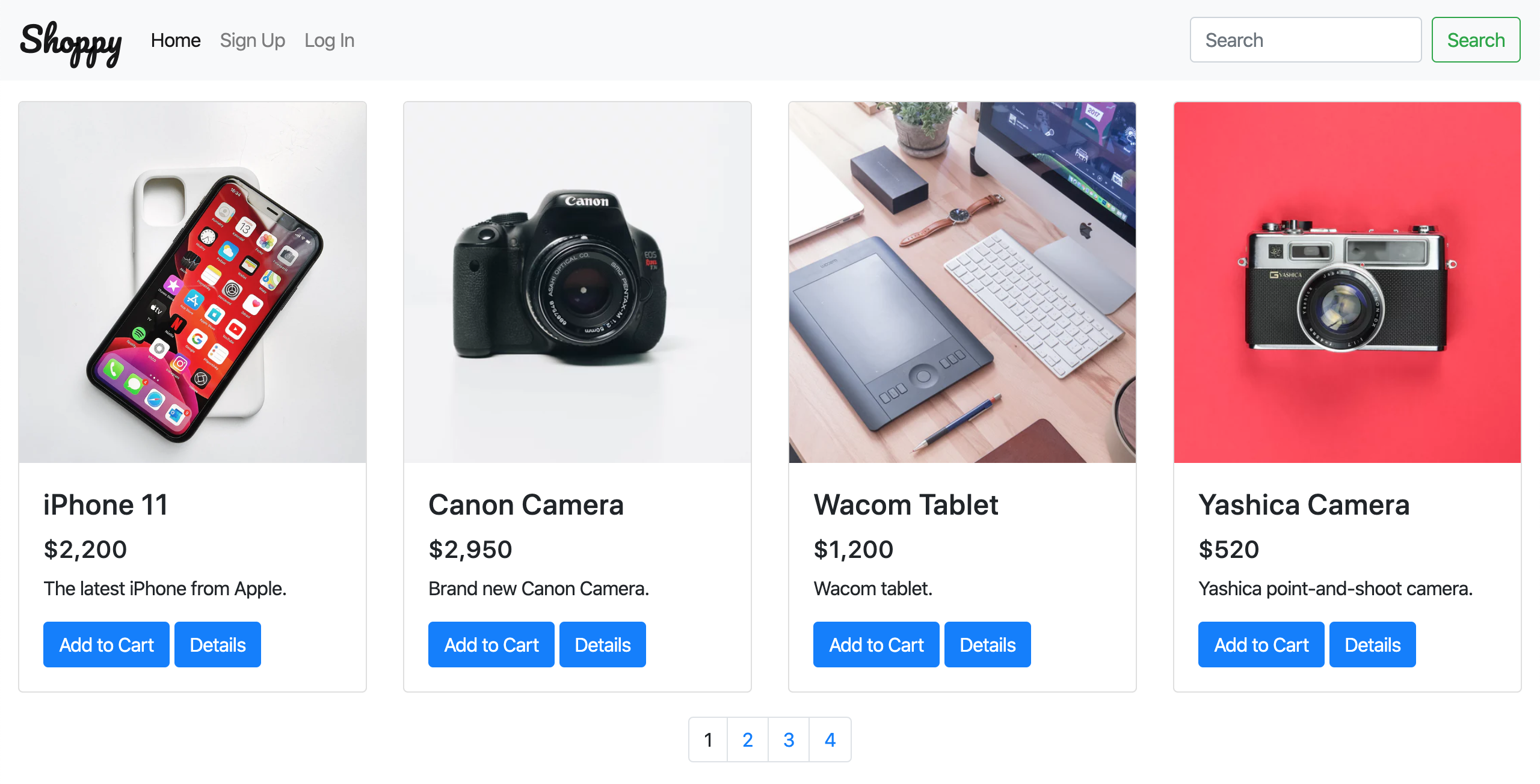This project aims to represent an online ecommerce platform APIs to validate / test the LoopBack 4 framework readiness for GA. See loopbackio/loopback-next#1476 for more information.
Node.js >= 8.9.0 and running instances of a MongoDB and Redis server are required for the app to start. The Redis server is used for the shopping cart, while MongoDB is used for the rest of the models in the app.
Docker is required for running tests, make sure it is running if you want to run the tests.
Do the following to clone and start the project.
In case you have Docker installed on your system and don't want to manually
install MongoDB and Redis, you can run npm run docker:start to download their
images and start the servers. Otherwise, you can skip this command.
$ git clone https://github.com/strongloop/loopback4-example-shopping.git
$ cd loopback4-example-shopping
$ npm i
$ npm run docker:start
$ npm startThe main app will be running at http:https://localhost:3000. The shopping website (Shoppy) is at http:https://localhost:3000/shoppy.html, and the API Explorer at http:https://localhost:3000/explorer/.
You will also see Recommendation server is running at http:https://localhost:3001.,
it is the server to which the services/recommender.service service will
connect to get the recommendations for a user.
The app will be pre-populated with some products and users when it starts; and
all existing products, users, shopping cart and orders will be deleted too. If
you don't want to reset the database, set databaseSeeding to false in the
application configuration object.
This app has the following models:
User- representing the users of the system.UserCredentials- representing sensitive credentials like a password.Product- a model which is mapped to a remote service byservices/recommender.service.ShoppingCartItem- a model for representing purchases.ShoppingCart- a model to represent a user's shopping cart, can contain many items (items) of the typeShoppingCartItem.Order- a model to represent an order by user, can have many products (products) of the typeShoppingCartItem.
ShoppingCart and Order are marked as belonging to the User model by the
use of the @belongsTo model decorator. Correspondingly, the User model is
marked as having many Orders using the @hasMany model decorator. Although
possible, a hasMany relation for User to ShoppingCart has not be created
in this particular app to limit the scope of the example.
User is also marked as having one UserCredentials model using the @hasOne
decorator. The belongsTo relation for UserCredentials to User has not been
created to keep the scope smaller.
Controllers expose API endpoints for interacting with the models and more.
In this app, there are four controllers:
ping- a simple controller to checking the status of the app.user- controller for creating user, fetching user info, updating user info, and logging in.shopping-cart- controller for creating, updating, deleting shopping carts, and getting the details about a shopping cart.user-order- controller for creating, updating, deleting orders, and getting the details about an order.
Services are modular components that can be plugged into a LoopBack application in various locations to contribute additional capabilities and features to the application.
This app has five services:
services/recommender.service- responsible for connecting to a "remote" server and getting recommendations for a user. The API endpoint atGET /users/{userId}/recommend, is made possible by this service.services/user-service- responsible for verifying if user exists and the submitted password matches that of the existing user.services/hash.password.bcryptjs- responsible for generating and comparing password hashes.services/validator- responsible for validating email and password when a new user is created.services/jwt-service- responsible for generating and verifying JSON Web Token.
Note: This app contains a login endpoint for the purpose of spike and demo,
the authentication for the CRUD operations and navigational endpoints of model
User is still in progress.
The endpoint for logging in a user is a POST request to /users/login.
Once the credentials are extracted, the logging-in implementation at the
controller level is just a four step process. This level of simplicity is made
possible by the use of the UserService service provided by
@loopback/authentication.
const user = await this.userService.verifyCredentials(credentials)- verify the credentials.const userProfile = this.userService.convertToUserProfile(user)- generate user profile object.const token = await this.jwtService.generateToken(userProfile)- generate JWT based on the user profile object.return {token}- send the JWT.
You can see the details in
packages/shopping/src/controllers/user.controller.ts.
Endpoint authorization is done using
@loopback/authorization.
Use the @authorize decorator to protect access to controller methods.
All controller methods without the @authorize decorator will be accessible to
everyone. To restrict access, specify the roles in the allowedRoles property.
Here are two examples to illustrate the point.
Unprotected controller method (no @authorize decorator), everyone can access
it:
async find(
@param.query.object('filter', getFilterSchemaFor(Product))
filter?: Filter<Product>,
): Promise<Product[]> {
...
}Protected controller method, only admin and customer can access it:
@authorize({
allowedRoles: ['admin', 'customer'],
voters: [basicAuthorization],
})
async set(
@inject(SecurityBindings.USER)
currentUserProfile: UserProfile,
@param.path.string('userId') userId: string,
@requestBody({description: 'update user'}) user: User,
): Promise<void> {
...
}There are three roles in this app: admin, support, and customer. You can
go through the controller methods in
user-controller.ts and
shopping-cart.controller.ts
to see which roles are given access to which methods.
The authorization implementation is done via voter functions. In this app, there is just a single voter function - 'basicAuthorization'. It implements the following rules:
- No access if the user was created without a
rolesproperty. - No access if the user's role in not in the
allowedRolesauthorization metadata. - User can access only model's belonging to themselves.
adminandsupportroles bypass model ownership check.
For more details about authorization in LoopBack 4, refer to https://loopback.io/doc/en/lb4/Loopback-component-authorization.html.
There is a tutorial which shows how to apply the JWT strategy to secure your
endpoint with @loopback/[email protected]. You can check more details in
https://loopback.io/doc/en/lb4/Authentication-Tutorial.html
Please check the try it out section in the tutorial.
The example application can be packaged as multiple Docker containers and deployed to a cloud environment as a Kubernetes cluster.
Please check out Deploy Shopping Application as Cloud-native Microservices.
This project uses DCO. Be sure to sign off
your commits using the -s flag or adding Signed-off-By: Name<Email> in the
commit message.
Example
git commit -s -m "feat: my commit message"
Other LoopBack 4 Guidelines apply. See the following resources to get you started:
See all contributors.


-@2x.png)